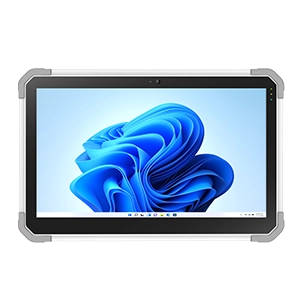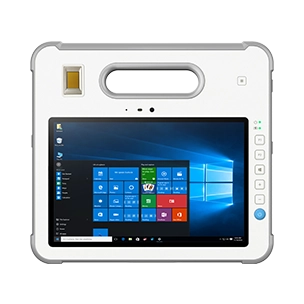What is the MIL-STD-810 Standard?
MIL-STD-810 is the United States Department of Defense (DoD) standard for environmental testing of equipment to ensure its durability and reliability under various conditions. First introduced in 1967, the standard has undergone multiple revisions, making it a critical benchmark for military and commercial-grade rugged devices. Manufacturers of rugged tablets, including Estone Technology, adopt MIL-STD-810 to demonstrate the robust performance of their products in demanding environments.

MIL-STD-810G and MIL-STD-810H: The Key Differences
The most commonly referenced version is MIL-STD-810G, released in 2008, followed by MIL-STD-810H in 2019. MIL-STD-810H introduced updated testing procedures and stricter criteria for various environmental conditions.
-
 A shift in drop test surfaces from plywood-backed concrete to steel-backed concrete.
A shift in drop test surfaces from plywood-backed concrete to steel-backed concrete. -
 An increase in the drop height from 4 feet to 5 feet for better real-world impact simulation.
An increase in the drop height from 4 feet to 5 feet for better real-world impact simulation.
-
 Method 500 – Low Pressure (Altitude)
Method 500 – Low Pressure (Altitude) -
 Method 501 – High Temperature
Method 501 – High Temperature -
 Method 502 – Low Temperature
Method 502 – Low Temperature -
 Method 503 – Temperature Shock
Method 503 – Temperature Shock -
 Method 504 – Contamination by Fluids
Method 504 – Contamination by Fluids -
 Method 505 – Solar Radiation (Sunshine)
Method 505 – Solar Radiation (Sunshine) -
 Method 506 – Rain
Method 506 – Rain -
 Method 507 – Humidity
Method 507 – Humidity -
 Method 508 – Fungus
Method 508 – Fungus -
 Method 509 – Salt Fog
Method 509 – Salt Fog -
 Method 510 – Sand and Dust
Method 510 – Sand and Dust -
 Method 511 – Explosive Atmosphere
Method 511 – Explosive Atmosphere -
 Method 512 – Immersion
Method 512 – Immersion -
 Method 513 – Acceleration
Method 513 – Acceleration -
 Method 514 – Vibration
Method 514 – Vibration -
 Method 515 – Acoustic Noise
Method 515 – Acoustic Noise -
 Method 516 – Shock
Method 516 – Shock -
 Method 517 – Pyroshock
Method 517 – Pyroshock -
 Method 518 – Acidic Atmosphere
Method 518 – Acidic Atmosphere -
 Method 519 – Gunfire Shock
Method 519 – Gunfire Shock -
 Method 520 – Temperature, Humidity, Vibration, and Altitude
Method 520 – Temperature, Humidity, Vibration, and Altitude -
 Method 521 – Icing/Freezing Rain
Method 521 – Icing/Freezing Rain -
 Method 522 – Ballistic Shock
Method 522 – Ballistic Shock -
 Method 523 – Vibro-Acoustic/Temperature
Method 523 – Vibro-Acoustic/Temperature -
 Method 524 – Freeze / Thaw
Method 524 – Freeze / Thaw -
 Method 525 – Time Waveform Replication
Method 525 – Time Waveform Replication -
 Method 526 – Rail Impact
Method 526 – Rail Impact -
 Method 527 – Multi-Exciter
Method 527 – Multi-Exciter -
 Method 528 – Mechanical Vibrations of Shipboard Equipment (Type I – Environmental and Type II – Internally Excited)
Method 528 – Mechanical Vibrations of Shipboard Equipment (Type I – Environmental and Type II – Internally Excited)


-
MIL-STD-810G Drop Test (2008-2019)Procedure IV: Devices are dropped from 4 feet onto plywood-backed concrete.
Test Coverage:26 drops covering all faces, edges, and corners. -
MIL-STD-810H Drop Test (2019 and Beyond)Updated to a 5-foot drop onto steel-backed concrete for more rigorous evaluation.
While the drop test is one of the most widely recognized procedures, manufacturers like Estone Technology often conduct additional tests, such as humidity (Method 507) and altitude (Method 500), to meet specific use-case requirements.

-
Drop RatingMIL-STD-810G, 4ft to Plywood
-
Shock RatingMIL-STD-810G, Method 516.6
-
Vibration RatingMIL-STD-810G, Method 514.6






